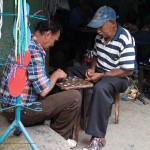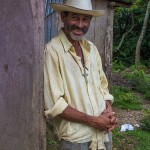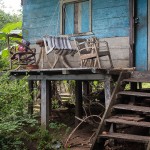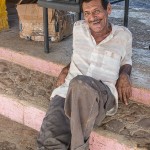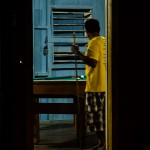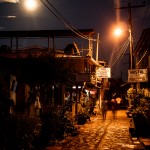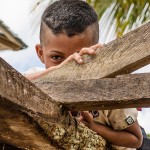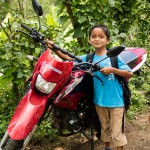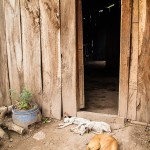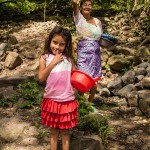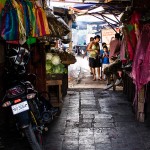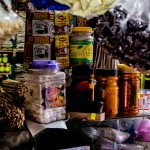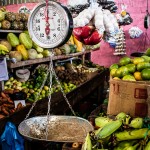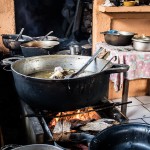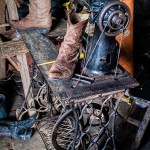Packing the camera for a trip always presents a set of vexing decisions for a photographer. What do you plan on shooting? What gear will be needed? This particular trip would be to a place I have never been and would present a range of unique photo opportunities. Nicaragua for the first time!
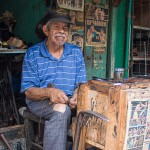
While I had never visited Nicaragua I had been in Mexico many times, I expected the photographic situation to be much the same, an expectation that was not disappointed. Each town in Latin America may be unique, but at at the same time looks much the same as the last. The character of these towns offers varied photo opportunities. Best of all to my thinking… Many towns feature markets, a sampling of the people and goods unique to the region, a condensation of the local culture in one convenient place.
Thus I chose my gear uncompromisingly for street photography. Leaving the big DSLRs and lenses at home I loaded two EOS-M bodies. I have one original model and one of the new M3’s purchased just before the start of the trip. These two cameras would take very little room in the luggage and offer a good range of capability. Traveling with only a single backpack meant space was at a premium. The primary lens would be the 18-55mm to allow a good general purpose walkabout capability.
The relatively low cost of these cameras was also a consideration as there would be some risk of theft or damage here. With a lengthy list of cameras damaged, lost or destroyed in my past I always consider this point. While I am sorely tempted by the new Sony Alpha a7 II with a full frame format, these cameras are four times as expensive, $1700 for the body alone. At about $400 for an EOS-M body the risk becomes far more acceptable, this is a camera I can take anywhere with me. The photo quality of the EOS-M series has been consistently good. A little risk will not stop me from carrying a good camera, I travel to shoot.
The plan worked, I was able to visit several markets. The cities of Camoapa and Boaco offer great markets. Unlike some places on the usual tourist route these markets do not cater to tourists, serving the surrounding population they are completely local. Vegetable vendors, seed vendors, cobblers, barbers, and carnecerias to be found around every bend in dim, narrow passageways. These markets were messy and beautiful, step over the sleeping dog sort of places, a new photo opportunity around every corner.
We also visited the market at Masaya, which was rather disappointing despite the old mercado building, this was a sterile tourist market full of souvenirs and far too neat. One walk through the Masaya market and I put away the camera, bought a coke and sat down to wait for the others.
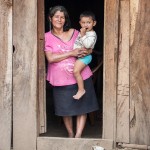
Traveling with an NGO that does water and sanitation work I spent several days in remote farming villages. Ramshackle homes with dogs and pigs wandering in and out, dirt floors, and a pot of simmering corn on the stove for tortillas. The people were beautiful, living hard lives but without the misery you might expect, proud and self-sufficient. With worn and weathered faces, they would smile at a camera and laugh loudly when you showed them the result. The results were quite pleasing, every day resulting in a dozen truly decent photos, even by my stringent standards.
The EOS-M is not a large camera, as a result I suspect it is less intimidating than a full size DSLR. Small and friendly in appearance while not sacrificing photo quality. More than a few times I have seen people shy away from a full size camera, while a smaller camera does not seem to elicit the same response. The large and bright display gives a nice view of the photo. As I often share the results with my subjects, showing them the photos.
My Spanish is not conversational, I can get along, but not really communicate. Facing a language barrier made it difficult to really connect with potential subjects. What I did find is that most people did not object to being photographed. You could usually tell by body language, raise the camera and watch people carefully. If they shy away or turn their head just lower the camera again, I do not press it. A subject looking straight into the camera is usually what I want, a smile is even better. The eyes are important they connect with the viewer and convey so much that can make or break a photo.
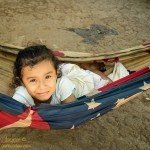
As with much of the world, Nicaraguan kids are simply fun. They enjoy being photographed, particularly kids in the small towns where cell phone cameras and where cable televisions are common. Simply raise the camera to shoot and they pose, show them the shot and they want to do it again. Little girls would strike poses that clearly came from music videos or tele-novella stars, a hand on a cocked hip and smiling coyly at the camera. A language barrier seldom presents an issue with kids, as soon as they see themselves on the screen the laughter begins, the more kids the better as they want to show each other the photo. They have fun, you get some great photos.
I usually set the camera for standard program settings and auto ISO. As I roamed a market the light was often dramatically different from shot to shot, one shot in full sunlight, the next in a dim, shadowed alley. In street photography the opportunities for shooting are often fleeting, with little chance to spend time making camera settings, I usually relied on the automatic settings to get it right. In this the camera performed very well, there are a few shots where the camera chose to focus on the wrong element of the image, but these were few.
In general the EOS-M firmware performed quite well under demanding conditions, focusing and exposing correctly. If I did need to override the focus point the M-series touch screen was extremely useful, simply touch the screen where you want to expose and focus in the image. Another setting I routinely changed was exposure compensation, being grateful that a proper exposure compensation dial was added to the M3 design after being conspicuously absent on the earlier models.
The 18-55 lens was a good compromise, but did show its limitations. A faster wide angle would have been extremely welcome at times. Canon looks to be releasing a number of new lenses in native EOS-M mount in the coming year, I will be looking to expand the selection of glass in my kit. A fast 35mm prime would be great, a lens that is rumored to be coming soon. I think I need to pick up the 55-200mm as well to add some modest telephoto capability to my travel setup.

While I am not alone in my appreciation for this often overlooked camera, it sometimes seems that way. The EOS-M has seen little love from many, often derided as Canon’s half-hearted effort at a mirrorless camera. Looking to pick up an additional lens I stopped by Ritz Camera, the big photo store in Portland, they did not even recognize the camera when I asked, confusing the EOS-M with the Leica M-mount. A few others have learned to appreciate the little camera for what it is…
- Serene Travel Photography with the Canon EOS-M
- Canon EOS M – Part One, The lazy travel Photographer
- Review – Canon EOS M3
The M3 is a huge improvement over the original M, far better controls, much faster focusing. Using both back to back I found myself preferring the new M3 over the original I had carried for two years. There are signs that Canon may even get serious with the camera line, the M3 has begun to appear in US shops and several new lenses may appear soon.
For street and travel photography the mirrorless cameras are the correct tool for the job, the only other reasonable option being the high end, large sensor compacts such as the Canon G series or Panasonic Lumix DMC series. I expect I will choose these cameras over the other options in my kit for travel in the future. Small size, general utility, and image quality all come together in a convenient package with these cameras.


